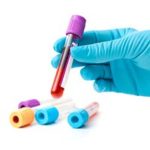
Senior and Diabetes
A Complete Guide
Updated on: February 2023

Diabetes is one of the biggest health issues in American history, and it’s only affecting more people as the population grows. As of 2015, the Center for Disease Control says more than 30 million Americans have some form of diabetes. That number makes up just under 10 percent of the entire American population. Around 25 percent of those 65 and older have diabetes, the CDC says, meaning about 12 million seniors have the condition.
These are astronomical numbers. The World Health Organization expects diabetes to be the seventh leading cause of death worldwide by 2030. And because so many people have it, Americans spend huge amounts of money on treatment and medication. The American Diabetes Association reported in 2012 that the cost of diabetes diagnoses was $245 billion—nearly a quarter of a trillion dollars. Most of that number came from the direct medical cost of diabetes ($176 billion), and the rest came from reduced productivity in the workforce because of diabetes ($69 billion).
Worst yet, some experts believe the number of Americans who have diabetes can increase from about one in 10 in 2015 to one in three by 2050, if current trends continue. This is due in part to an increasingly older population—one that is more at risk for developing diabetes as they age. In the very best scenarios, experts believe that one in five Americans will have diabetes by 2050.
“These are alarming numbers that show how critical it is to change the course of type 2 diabetes,” said Ann Albright, the director of CDC’s Division of Diabetes Translation.
She stressed that we must develop “successful programs to improve lifestyle choices on healthy eating and physical activity … because the stakes are too high and the personal toll too devastating to fail.”
The first step in combating diabetes is being informed—understanding what it is, how to take preventative measures, and how to treat the disease.
Find What You Need
What is Diabetes?
Diabetes is a disorder that affects the body’s metabolism and how it processes food for energy purposes. When you are diagnosed with diabetes, that means that your body has difficulty processing the sugars from the food you eat. Because of this, your body’s blood glucose (blood sugar) levels are too high. Over time, having too much sugar in your blood can have dire effects on your health and can affect your overall lifestyle, from your activity level to your diet.
The main player in processing sugar in your body is insulin. When you have diabetes, your body either doesn’t produce enough insulin or it doesn’t use insulin the right way. Insulin is created in the pancreas, then released into the bloodstream, where it helps absorb the glucose and converts it to energy and helps keep blood sugar levels normal. This doesn’t always happen, though. When your body doesn’t use insulin properly, that is called “insulin resistance,” which is the predecessor for type 2 diabetes. Sometimes your body doesn’t produce insulin at all, and this is the main factor for developing type 1 diabetes.
This is why saying you have diabetes doesn’t exactly paint the whole picture of your symptoms.
There are certain types of diabetes that occur at a young age (gestational diabetes, for example, develops in pregnant women), but we’re going to take a look at how diabetes affects your health as you get older.
Which Seniors are at Greater Risk for Diabetes Than Others?
How old you are plays a large role in the type of diabetes you’re diagnosed with due to how your body handles insulin over your lifetime. While type 1 is most often developed at a younger age, type 2 is most commonly diagnosed in middle-aged and older people. This is due to lifelong eating and lifestyle habits that contribute to diabetes’ development. So yes, seniors are at a greater risk for developing diabetes.
Simply put, elderly people have been exposed to sugar longer than other generations of people, so their chances of developing hyperglycemia—”abnormally high” blood glucose levels— and, ultimately, type 2 diabetes is greater. Seniors of different races are also more likely to develop diabetes than others. According to the American Diabetes Association, here are the rates of diagnosed diabetes among certain races, from highest to lowest:
| Percentage | |
|---|---|
| American Indians/Alaskan Natives | 15.1% |
| Non-Hispanic Blacks | 12.7% |
| Hispanics | 12.1% |
| Asian-Americans | 8% |
| Non-Hispanic Whites | 7.4% |
There is a wide range of reasons that play into why certain races develop diabetes at higher rates than other, including: being predisposed to having higher rates of insulin resistance, living in poorer neighborhoods (which has shown to expose minorities to unhealthy food options), and higher levels of obesity.
Prediabetes
Getting diagnosed with prediabetes means that, while your blood sugar is high, it’s not consistently high enough to be considered to have type 2 diabetes. However, it does mean that you should immediately take action to reverse it. When you have prediabetes, your body is either slowly starting to reject insulin as a way of converting sugar to energy or it soon will. The ADA says that half of Americans 65 and older have prediabetes, which means that nearly 25 million seniors are at risk for developing type 2 diabetes. That is a staggeringly high number, given that another 25 percent of the senior population already has diabetes. An issue with prediabetes, though, is that there are generally no symptoms. If you are experiencing symptoms associated with diabetes, you may already have it.
It is imperative that your doctor stays on top of your blood sugar levels and that you start taking steps to live a healthier life if you are told you are prediabetic.
Causes
Prediabetes is a condition that is developed over your life, which means there are lifestyle choices combined with family history that play a role in developing prediabetes (and potentially full-on diabetes).
Because prediabetes is the first step to developing type 2 diabetes, the causes of type 2 diabetes are extremely similar to prediabetes. Some of the more specific causes of prediabetes include:
Inactivity
The glucose that is burned for energy with the help of insulin is basically used to help fuel active humans. When you exercise, your body’s muscles burn more glucose and actually use less insulin in the process, too, which helps reverse insulin resistance. So if you’re inactive, your muscles aren’t burning the glucose and instead are storing it, resulting in higher blood sugar levels.
Genetics
You are more likely to develop prediabetes if you have a family history (parents, siblings) of diabetes.
Sleeping Patterns
Researchers say that your quality of sleep can affect how at risk you are for developing prediabetes or type 2 diabetes. Sleep deprivation and sleep disorders like sleep apnea have been linked to higher blood sugar levels and also play a role in obesity, which is another cause of diabetes. In a study of good and poor sleepers with diabetes, researchers found that poor sleepers had 23 percent high blood glucose levels in the morning and 82 percent higher insulin resistance than normal sleepers with diabetes.
Excess Fat
This can be associated with inactivity, as a lifestyle full of not exercising while eating fatty, unhealthy foods can cause fat to store and affect your health. Excess fat, especially around the waist area, is harmful to the body and organs in it by increasing the inflammation it causes, according to the National Institute of Diabetes and Digestive and Kidney Diseases (NIDDK). Over time, this inflammation has been shown to play a role in the development of insulin resistance, among other health issues like high blood pressure and high cholesterol, which can both be related to the presence of diabetes.
Metabolic syndrome
This factor includes some aforementioned causes of diabetes, like high blood sugar and excess fat (especially around the waist), but it also includes issues like high blood pressure and high cholesterol and triglyceride levels. All of these play a part in having a higher risk for prediabetes and developing type 2 diabetes
Demographics
There are certain races that are more likely to develop prediabetes than others, though as the Mayo Clinic points out, these trends can’t particularly be explained. It’s also more likely that you develop prediabetes as you get older, with the risk for prediabetes increasing after you hit 45.
Prevention
Just because you are diagnosed as prediabetic does not mean you will definitely develop diabetes. You are more likely to, though, and you should start to pump the brakes immediately. As your blood sugar levels are climbing to dangerous levels when you are prediabetic, there are lifestyle changes you can make to help those numbers trickle down to normal levels once again.
- Eat better: Simply choosing healthier food options like fruits, vegetables, and nuts as opposed to soda, potato chips, and fast food can help regulate your blood sugar levels. Get in contact with a dietician who can help develop a plan for your specific blood sugar levels, weight, and food preferences.
- Exercise: Getting exercise doesn’t mean that you have to visit the gym four days a week for an hour each day! Simply being more active than you were before can help your health. Go on long walks a couple times a week, and progress into a jog if your body can handle it. You can also visit the gym and lift light weights to help build muscle. As mentioned before, muscle helps decrease your dependence on using insulin to burn sugar into energy, so it helps decrease your insulin resistance in the long run.
- Lose weight: Typically, a combination of the previous two methods results in losing weight. Eating less fatty, high-sugar foods combined with an increased exercise regimen often results in the burning of fat at a more reasonable and efficient pace. Even losing 5 to 10 percent of the weight you’re currently at can decrease your risk for developing type 2 diabetes. (For example, if you weigh 250 pounds, losing 15-25 pounds is a great goal to set to start regulating blood sugar levels.)
Type 1 Diabetes
Type 1 diabetes occurs when when your pancreas creates little to no insulin at all. This occurs because your body accidentally mistakes the islets that produce insulin in your pancreas as “foreign” species, attacking them with antibodies and all but destroying your ability to create anymore insulin, the Mayo Clinic says. The pancreas then cannot do its job of creating energy out of sugar.
This form of diabetes is often developed in your adolescent years, and it is the least common of the two main types of diabetes—around 10 percent of those diagnosed with diabetes have type 1. Just because you are often diagnosed with type 1 diabetes in your youth doesn’t mean that there aren’t health issues that play a factor as you age. There have also been occasional diagnoses of type 1 diabetes over the age of 40.
Symptoms
Warning signs of type 1 diabetes include:
- Frequent urination and bed wetting
- Increased thirst and hunger
- Mood changes
- Blurry vision
- Fatigue
- Weight loss (not due to a change in diet or exercise)
Effects
As you age, type 1 diabetes can cause a slew of health issues due to the lifelong management of trying to keep blood glucose levels in check. Altering blood sugar levels can have a devastating impact on many organs in your body, so the diseases and troubles that can stem from diabetes affect the whole body. These issues (which are similar to the effects of type 2 diabetes) include:
Heart Disease
The presence of type 1 diabetes increases your chances of developing diseases associated with the heart like heart attacks, strokes, coronary artery disease, and more. Nearly three in four people with type 1 diabetes suffer from some sort of heart-related issue as they age.
Kidney Damage
Your kidneys have tons of small blood vessels that can be damaged because of the presence of diabetes. Too many damaged blood vessels renders your kidney useless, as it can no longer filter your blood properly causing a fluid irregularity in your body. The National Kidney Foundation says that about 30 percent of people with type 1 diabetes will experience kidney failure.
Hypoglycemia
Seniors are especially at a higher risk for developing hypoglycemia, which is the presence of extremely low blood sugar levels. Many effects on this list are brought on by long-term exposure to hyperglycemia—the presence of high blood sugar levels—but hypoglycemia can be even more dangerous in the immediate term for seniors. Even brief episodes of hypoglycemia can result in severe health episodes, like entering a coma and having seizures. It can also cause you to faint and fall, which can lead to a rash of other injuries and more hospital stays.
Nerve Damage
High amounts of sugar in your blood can affect the blood vessels that bring blood to the tiny nooks of your body. If blood is not properly getting to the nerve endings, they can be partially or permanently damaged and cause tingling, numbness, or a permanent loss of feeling.
Eye Damage
Just as there are many blood vessels in your kidneys, there are also many in your eyes that can be affected by the presence of diabetes. A symptom of type 1 diabetes is blurry vision, which is caused by the blood vessels attached to your retinas being damaged. This condition can only worsen over time as the diabetes is left mismanaged or untreated.
Foot Damage
Your feet—the furthest parts of your body from your heart—can be affected by diabetes from poor blood flow and nerve damage. This can result in amputations of toes, feet, or even parts of legs.
Type 2 Diabetes
Type 2 diabetes is the most common form of diabetes. It accounts for about 90 to 95 percent of all diabetes cases, but it is also the most preventable and treatable form of diabetes if blood sugar levels are caught and managed before they reach too high of a level (during the prediabetic stage).
This form of diabetes occurs when your body stops using insulin the right way. Because of the high levels of sugar in your blood, your pancreas makes extra insulin as a way of trying to process all the sugar in your blood, but over time, the insulin can’t keep up and leaves high levels of sugar streaming through your veins and vessels. This can have severe effects on your health.
Symptoms
Unlike those with type 1 diabetes, who typically feel the symptoms of their diabetes come on relatively quickly, the symptoms of type 2 diabetes are more likely to gradually onset as blood sugar levels rise over a lifetime to dangerous levels. The symptoms are similar, though, because both forms of diabetes revolve around not processing sugar in your blood the right way. These include:
- Increased urine patterns
- Extreme hunger or thirst
- Fatigue
- Blurred vision
Risk Factors
As we discussed in its earlier section, prediabetes later develops into type 2 diabetes if untreated. That means the causes for type 2 diabetes are the same as prediabetes: age plays a role, and so do your weight and activity levels. Genetics have some role, too, as you are more likely to develop type 2 diabetes if close family members suffer from it as well.
Effects
In addition to the symptoms of type 2 diabetes being similar for type 1 diabetes, the long-lasting health effects are similar, too.
However, patients with type 2 diabetes often have a higher chance of developing severe health issues and have higher rates of mortality from their condition than patients with type 1 diabetes. This can partially be explained by the number of people who have type 2 diabetes being much higher than those with type 1. It can also be explained by treatment plans not being followed at an older age (not eating right or exercising) or just a simple lack or diagnosis.
According to the CDC, diabetes—mostly type 2—is the leading cause of:
- Kidney failure
- Lower limbs being amputated
- Adult-onset blindness
It’s also been reported that more than 50 percent of patients with type 2 diabetes die from a cardiovascular disease. Additionally, more than 70 percent of adults with diabetes have to be treated for hypertension, a high blood pressure syndrome, that can lead to other issues with the heart. Those with type 2 diabetes are also twice as likely to suffer from strokes or heart attacks as those without diabetes.
Getting Tested
If you fear you may be have diabetes, bring it up to your doctor. Typically, your doctor will be on top of your blood sugar levels whenever you go in for an appointment, and if they notice anything is off, they will suggest you get tested. There are several tests your doctor may run, either using one test multiple times or trying multiple different tests to confirm a diagnosis. These tests include:

A1C test
This test takes a look at your average levels of blood sugar over the past three months, which helps give doctors an idea if your current high blood sugar levels are just a blip or a trend. This test is most commonly used when discovering prediabetes or type 2 diabetes. You don’t have to fast before taking this test, and it can be done simply by drawing blood. The test reports in a percentage, and the higher the percentage, the higher your blood sugar levels are. A normal percentage is below 5.7 percent while levels between 5.7 and 6.5 are considered prediabetic. Levels above 6.5 are associated with diabetes.

Fasting Plasma Glucose (FPG) Test
This test checks your blood sugar levels at the current time of testing. These tests are scheduled well in advance, and for best results, you should fast for at least eight hours before taking the test.

Random Plasma Glucose (RPG) Test
Similar to the FPG test, this test checks your blood sugar levels at one moment in time. But this test is done without fasting, usually if you are showing severe diabetes symptoms and doctors want to know your blood sugar levels right away.
Prevention and Treatment
There is no cure for diabetes. If caught in time, there are preventative steps you can take in the pre-diabetic stage, as discussed earlier. But for the most part, diabetes cases are treated differently based on which type you have, due to your body’s different needs, blood sugar levels, and health effects stemming from diabetic symptoms.
Type 1 Treatment
The main mode of treatment for type 1 diabetes is putting the insulin in your body yourself because your pancreas doesn’t make it. This can be done two separate ways:
Injections
This occurs via a needle or insulin pen.
Pumps
Attached to your body, the pump can slowly introduce insulin or rapidly do so without you having to inject yourself.
When you have type 1 diabetes, you should also be constantly monitoring your blood sugar levels, eating healthy foods, and exercising to ensure that the insulin that is now present in your body through injection doesn’t have to work harder to get the job done.
As you age, it’s even more vital that you pay attention to your blood sugar levels and stick to a strict treatment regimen. As one study points out, it may be more difficult for older adults to manage their type 1 diabetes because of the lack of mobility or cognition needed to help keep blood sugar levels in check. The study also noted that the earlier in life you are diagnosed with type 1 diabetes, the longer of a burden the disease can have while opening the door to other diabetes-related complications.
Type 2 Treatment
The primary step in type 2 diabetes treatment is getting your lifestyle and eating habits in order. Eating healthy and becoming more active—whether it’s starting to take walks or signing up for a class—are important steps in maintaining your blood sugar levels.
There are medical means that can help regulate blood sugar levels, too. These include:
Metformin, Ozempic, and Wegovy
This is the primary type 2 diabetes medication used to help adjust blood sugar levels, as long as your diabetes hasn’t advanced enough to cause kidney failure, heart issues, or other severe health issues. While Metformin, Ozempic and Wegovy have also been shown to cause you to lose weight, taking this medication should be done alongside exercise plans and healthy eating so you can keep the weight off once done with the medication.
Insulin Therapy
Some with type 2 diabetes need help getting their insulin levels back on track and working the right way. Like type 1 diabetes, this function can be done through injections or pumps. The type of insulin—and how long you need it—can be determined by your doctor.
When you have type 2 diabetes, you should be taking aforementioned A1C tests several times a year, so you can see how your blood sugar levels are progressing at a very detailed measure.
While it is technically possible to reduce blood sugar levels back to normal or prediabetic levels, the most important thing to do when you’ve reached this level is maintain the regimen that got you to those better levels. This will help keep blood sugar levels low and minimize the damage done from the previous years.
One study hosted people with diabetes and instituted a new lifestyle plan that addressed their issues. The subjects exercised for at least 175 minutes a week (about 25 minutes a day), ate between 1,200 and 1,800 calories a day, and continuously received therapy and information about how to maintain a healthy lifestyle. Ten percent of the people with diabetes were able to get off their medication after a year and had blood sugar levels that were no longer in the diabetic range.
It’s also important—from the doctor’s end—to watch out how strictly seniors with diabetes are being treated. For instance, seniors’ A1C levels may be around 6.5 (a level normally considered to be on the cusp of diabetic). However, it’s important seniors’ blood sugar levels don’t drop dangerously low due to the risk of hypoglycemia, which can immediately cause more severe health effects (coma, fainting, etc.) and heighten the risk of mortality.




